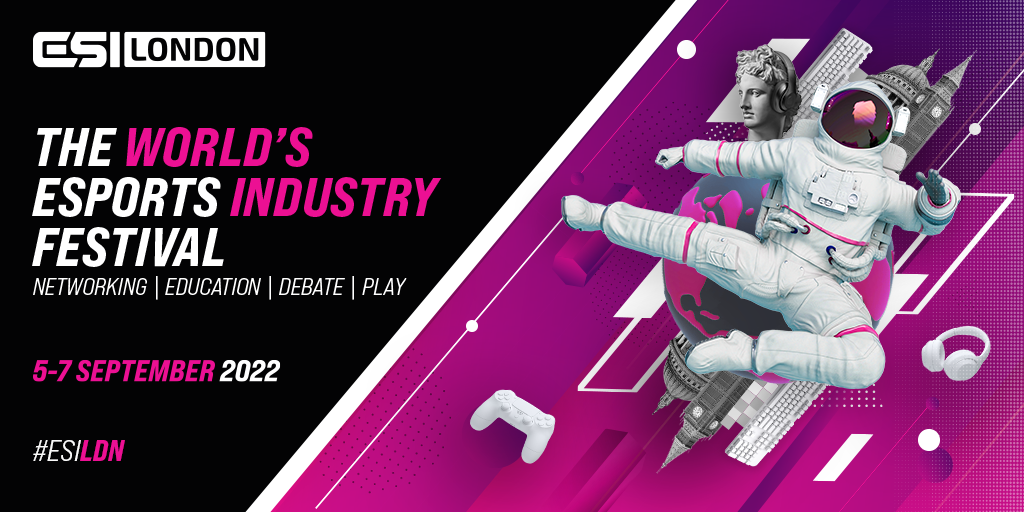In this guest column, Forever Esports Co-founder Tom Hermans analyses the latest academic research surrounding esports and leverages it to spell out ready-to-use practical knowledge for the esports industry.

What the science says
Sponsorship underpins much of the esports industry’s fortunes — approximately 58% of the esports industry’s market revenue is derived from sponsorship and advertising deals, according to Newzoo.
In this guest column, I analyse the latest academic research on esports marketing. I look at what the literature says about three common advertising avenues — esports teams, broadcast overlays and in-game advertising — and what takeaways it can offer brands in esports.
Esports teams
Sponsoring esports teams is a cornerstone of the industry, and can take many forms. Brands can either put their logos on jerseys, clothing and accessories, or on surfaces such as background screens, banners and mouse pads that are prominently shown on stream.
Research published in the SPORT TK Euro-American Journal of Sport Sciences in 2022 analysed the effectiveness of such brand placements during esports matches through implicit research techniques to captivate viewers’ underlying responses. These techniques included monitoring brain activity, galvanic skin response, eye-tracking and their emotional and cognitive states.
When taking these implicit research techniques into account, the researchers found that brand placement on people — including the clothing and accessories of players, admins and coaches — was significantly more effective than sponsorships on other surfaces, such as mouse pads or chairs.
More precisely, 87.5% of participants were able to visualise brands that could be seen on people in comparison to 74.6% when placed on other surfaces. When brands were not placed on people, the most optimal sponsorship placements were background screens and banners, while stickers or mouse pads were shown to be not very effective.
Furthermore, the study found that the effectiveness of an esports sponsorship is more encompassing than simply time spent viewing a certain brand. Results showed that using only exposition time as a metric has an error of 60.2% in comparison to when emotional and cognitive impacts are also considered.
The authors go on to show that cognitive and emotional reactions play an important role, meaning that a brand’s marketing efforts should attract high levels of attention, memorisation and have a high emotional impact.
For example, most of the study participants saw the brand Adidas, but in this particular study Adidas’ efforts had a low emotional and cognitive impact. On the other hand, a brand called Ozone was seen by less participants but had more cognitive and emotional impact, resulting in the authors concluding Ozone had the more effective marketing effort.

In-game advertisements
Increasingly, brands are advertising inside video game universes themselves in an effort to be both more authentic and more engaging to esports audiences. It’s most notably found within racing games, but major titles including League of Legends and Rocket League have offered the ability to integrate adverts into the games themselves.
Usually, these are found as branded billboards on the map or racing track. Researchers from Breda University, Miami University and the American University Game Lab found in 2015 that there’s an important distinction for brands to keep in mind between watching a game and playing a game.
Their study showed that in-game billboard ads in competitive racing games were more effective for viewers in comparison to those playing — spelling good news for esports. Viewers were significantly better than players at recognising logos.
Moreover, the research concluded that participants’ attitudes towards in-game advertising were either neutral or positive, meaning brands would not harm their image by opting for in-game advertising, according to this study.
The research was backed up by another 2016 paper published in the Journal of Interactive Advertising, which found that 97% of those who watched someone else play Trackmania recalled at least one brand that was shown on a billboard, while 92% recalled at least two or more.
Broadcast overlay
Brand advertisements have become a common sight on stream overlays during esports broadcasts. However, research has cast doubt on the efficacy of stream overlays for reaching an audience.
The Finnish LUT University concluded in 2019 that half of its study’s participants did not remember a single company that was shown on the overlay during a CS:GO broadcast. Although the researchers used fictional logos, their findings are relevant to the new and non-endemic brands that continue to enter esports.
An important finding from the LUT University study is that static advertisements – ads that do not move or are not incorporated in a meaningful way into the stream — perform worse than adaptive and dynamic ads, such as branded recaps of a gameplay highlight.
A study published in the Journal of Behaviour & Information Technology in 2018 backed up this finding. This study analysed sponsorships during a Starcraft 2 game. When logos performed an animation every few seconds, such as rotating, participants stared significantly more frequently and for longer at the brand’s logo in comparison to logos that did not. This shows that ad animation can be a powerful attention-grabbing factor, especially when during quiet periods of the game.

The pitfall for non-endemic brands
Endemic brands are able to capitalise on gaming and esports to leverage sales due to their natural and authentic fit, but non-endemic brands need to be careful when using gaming and esports to promote their brand — a common lesson in esports that can now be backed up by research.
A 2020 research article published in the Journal of Global Sport Management shows that the most important determinant for a non-endemic brand’s success in esports is to have good intentions towards gaming and esports fanbases.
The key is to show goodwill; when brands overtly show that they truly know how gamers think and act, only then will positive attitudes — and increased purchase intentions — be developed.
If a brand’s efforts come across as generic or inauthentic advertising, the researchers indicated that the audience will actually start to dislike the brand. This highlights how important it is to be knowledgeable about esports and to properly understand gamers’ needs.
A possible explanation advanced by the researchers for the negative brand reception is Schema Theory. Endemic sponsors fit within the mental schema that audiences have regarding esports, while non-endemic brands do not.
Non-endemic brands are seen as unnatural and challenge this schema, the authors posited. Non-endemic brands must overcome this by overtly displaying goodwill, meaning they have to prove that they genuinely are connected to the esports and gaming community.
A famous case study backing up this theory, also cited in the article, is fast-food chain Wendy’s’ gaming activation around its ‘Always fresh, never frozen beef’ slogan. Wendy’s set up a marketing campaign that capitalised on a limited-time event within Fortnite called ‘Food Fight’.
Wendy’s hosted a live stream on Twitch during which it started destroying in-game freezers in Fortnite, to spread the message of how much it disapproves of frozen food. The marketing campaign was received well because it clearly showed that Wendy’s was in touch with the gaming community and utilised authentic, non-disruptive and non-generic advertising.
The future of esports research
Academic research surrounding esports is on the rise, thanks to its mainstream ascension and researchers better understanding the esports ecosystem. While academics used to focus only on general gaming, most now recognise that esports is different from regular gaming.
For example, academics are using more and more actual esports titles such as CS:GO, Starcraft 2 and League of Legends to measure participants’ reactions to certain stimuli.
As a result, and with the launch of dedicated esports journals such as the International Journal of Esports (IJES) and the International Journal of Esports Research (IJER), academic research will only become more important for industry professionals to make informed decisions.
Tom Hermans studied at KU Leuven University (Belgium) and Kobe University (Japan) where he obtained his Master’s degree in social sciences. Hermans is active in the esports industry and uses data and science, through his company Forever Esports, to advise esports businesses and businesses that are looking for opportunities within the esports ecosystem.

